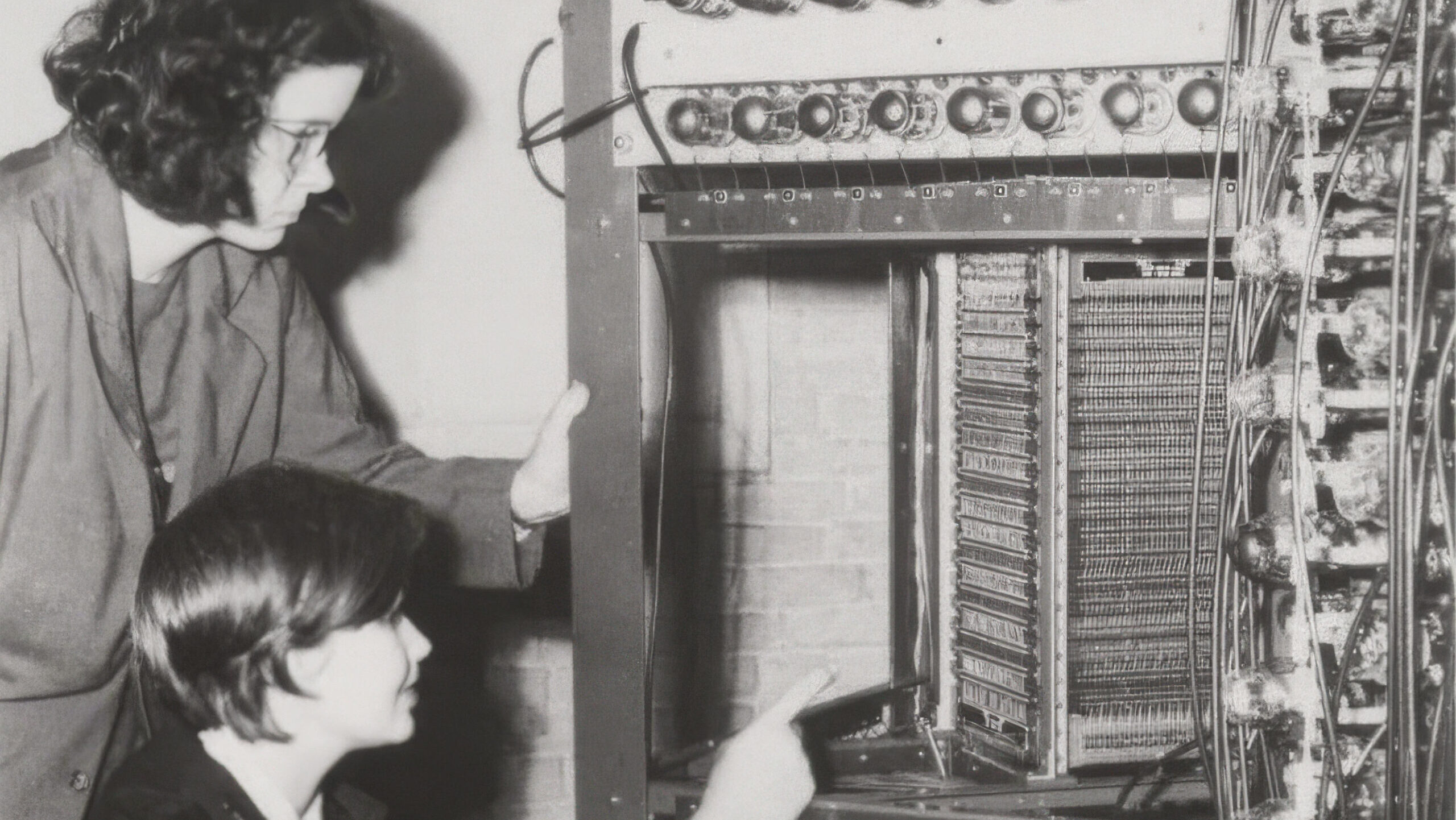Filling Gender Bias Gaps
AI technologies, especially image generation models, can rewrite history and enhance our understanding of the past while addressing potential gaps. The project critiques distortions in historiography driven by political interests, personal preferences, one-sided narratives and the marginalization of people and events. This particularly applies to FLINTA* individuals, whose contributions have been overlooked.
By creating a growing fictional image archive within a cultural, socio-political and scientific context, the project reinterprets the past with inclusivity and diversity. In this way, AI models are trained and informed to ensure a balanced perspective. This collection, which can be data scraped, is spread across digital platforms, fostering a deeper understanding of history and its impact on future AI decisions.
The exhibition installation presents a selection of images related to technology using a slide projector and a vintage projection screen, evoking the feel of a historical, analog-image archive.
Bio
-
 Photo: BMEIA/ Valerie Marie Voithofer
Photo: BMEIA/ Valerie Marie VoithoferClaudia Larcher
AT
Claudia Larcher is an artist, filmmaker, and AI researcher. Her work spans video animation, collage, photography, and installation. She explores Feminine AI, integrating gender perspectives in AI development to promote inclusivity and diversity. Larcher has exhibited her works globally, including at Anthology Film Archives NYC, Calouste Gulbenkian Foundation Lisbon, Centre Pompidou Paris, Gray Area Festival San Francisco, Manifesta 13, and Tokyo Wonder Site. Currently, She is a resident of ARTTEC program at AIT.
Credits
The Ars Electronica Award for Digital Humanity was initiated and is supported by the Austrian Federal Ministry for European and International Affairs.





